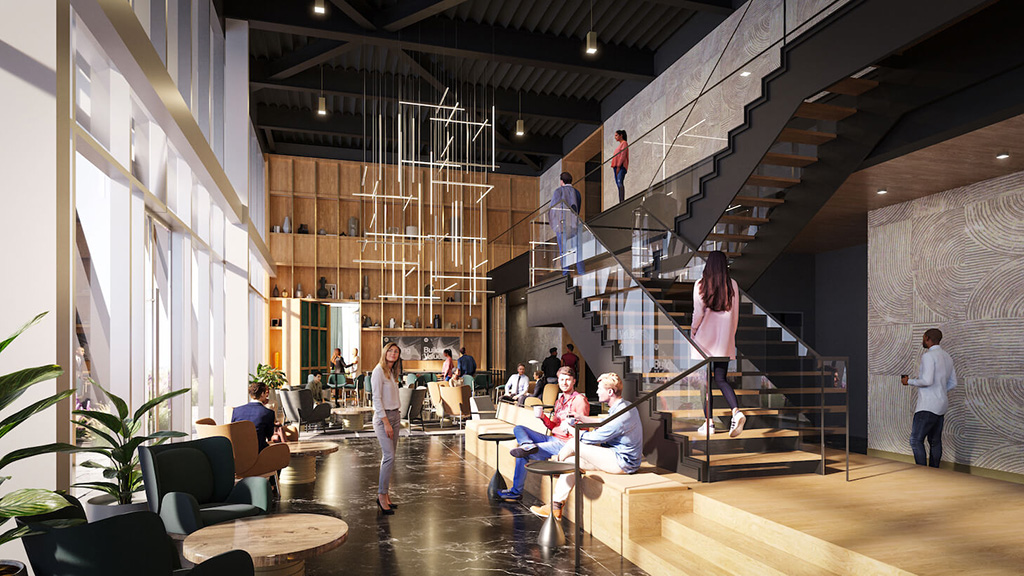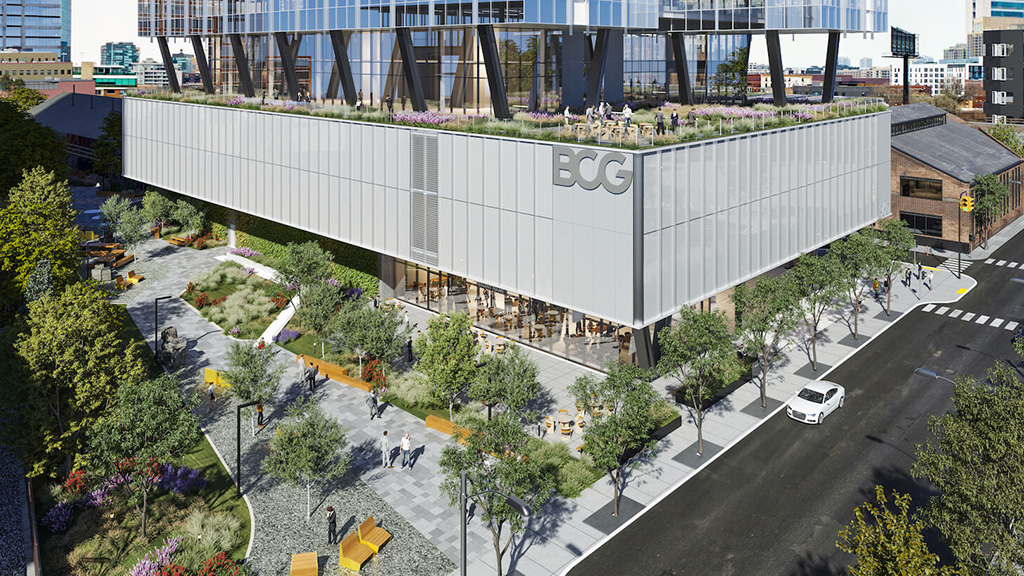Chicago’s Fulton Market office submarket is burgeoning with a 25-storey tower to open this fall.
It marks a new phase for the former warehouse district, which up to now has seen warehouse conversions into office complexes. And it marks a change in the type of tenants leasing in the district, from tech and information businesses to traditional white collar national consultancies and law firms. The tower, called 360 North Green, by hometown developer Sterling Bay, is now 90 per cent leased.
The major anchor of the building with be the Boston Consulting Group, with clients worldwide in the private and public sectors including health care, transportation and financial services. It signed a 15-year lease for 250,000-square-feet or about half the building’s space.
A Boston representative didn’t respond to a request for comment.
But a spokeswoman for another white collar high-profile legal firm, Chicago’s Greenberg Traurig, also locating there, said the firm was looking for an “innovative, collaborative space.”
360 North Green also provides “enhanced efficiency and flexibility” with amenities like 5,000-square-feet of outdoor space, separate floor terraces, communal gatherings, a fitness studio and even duckpin bowling, Elizabeth Hodgman said.
Indeed, duckpin bowling has been a hit with tenants. That along with more people-oriented spaces and even a bar to give a “speakeasy” feel are what is attracting tenants, Lori Mukoyama of worldwide architectural firm Gensler told the Chicago Sun-Times.
But there is still a nod to the traditional legal environment.
“The heavy drapes, the deeper wood, it still harkens to a very professional service vibe but done in a much more modern way,” she said.
Fulton Market, a former meatpacking and grocery distribution district, has increasingly been converting buildings over the past 10 years to perhaps the city’s most successful commercial submarket, now with the second lowest vacancy rates in the city.
The move of McDonald’s worldwide and Google’s Midwest headquarters into the district has given it gravitas and credibility, now on a roll extending geographically perhaps a couple of dozen square blocks, and less than a mile west of the city’s traditional CBD, The Loop.
While 360 North Green is roughly in Fulton Market’s northeast corner, diagonally across several blocks in the southwest, Chicago’s LG Group is planning two major mixed-use towers to include a much-needed grocery store and 600 apartments to further diversify the district as a place where people can work, live and play. These buildings are 38 and 25 storeys.
Gensler is also the architect.
Meanwhile, Sterling Bay, the prime developer of Fulton Market, is also building a 28-storey mixed-use tower nearby.
The migration of high-profile businesses to the newer Fulton Market submarket may be driven by a new generation of tenants that want non-traditional amenities like collaborative and recreation spaces.
But it’s also driven by good old-fashioned prices. Fulton has become more prestigious and attracted higher-end clients who are paying almost twice the square foot ($65) to The Loop’s $34 (2023 figures).
“When you look at the price per square foot it demands a certain price point and type of building so that is why you’re getting the highrises here,” Eleanor Gorski, president and CEO of the Chicago Architecture Center said.
But residential prices, on the other hand, are markedly cheaper at about $2,600 for 800 square feet compared to $3,400 for 1,000 square feet in the Loop.
However, there are other factors that spurred the submarket.
These include the lifting on a 100-foot height restriction and new transit stations, something which has long “very much defined” the city’s commercial areas, Gorski said.
LaSalle Street, the traditional home of law firms, has been gradually emptied as firms sought to be closer to the Chicago River, “as the river became an amenity” and north beyond the river.
“So, I think we’re seeing what was gradual continue further west to Fulton Market.”
But The Loop is not sitting down and taking it.
“We’re seeing kind of a reversal where the office rental rates in the Loop are coming down,” Gorski said. “So, you’re seeing some folks who couldn’t have afforded to be in The Loop now going there.”
Even non-traditional Loop firms like non-profits and tech are migrating there, some ironically from Fulton Market “which is where they started,” she said.
The city has also drawn up “LaSalle Reimagined” with six projects to convert 1.3-million-square-feet of office space along the LaSalle Street highrise canyon to mixed-use and residential buildings through incentives like tax increment financing.





Recent Comments